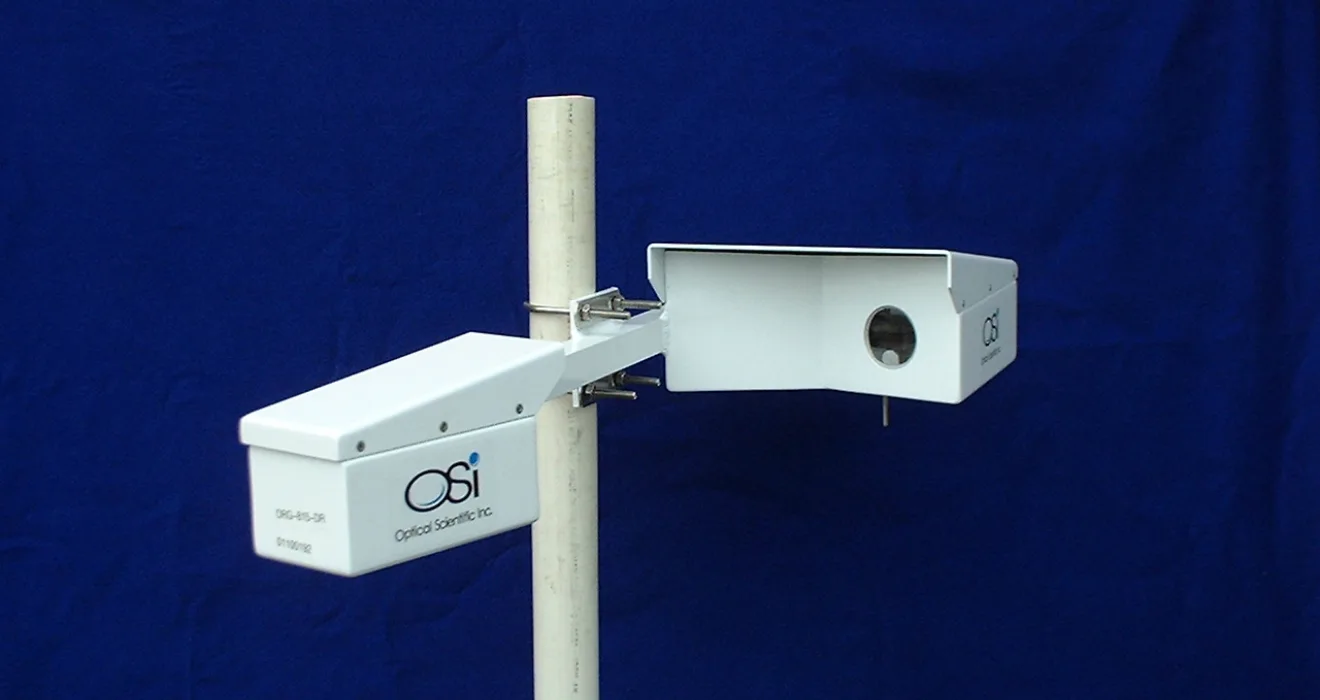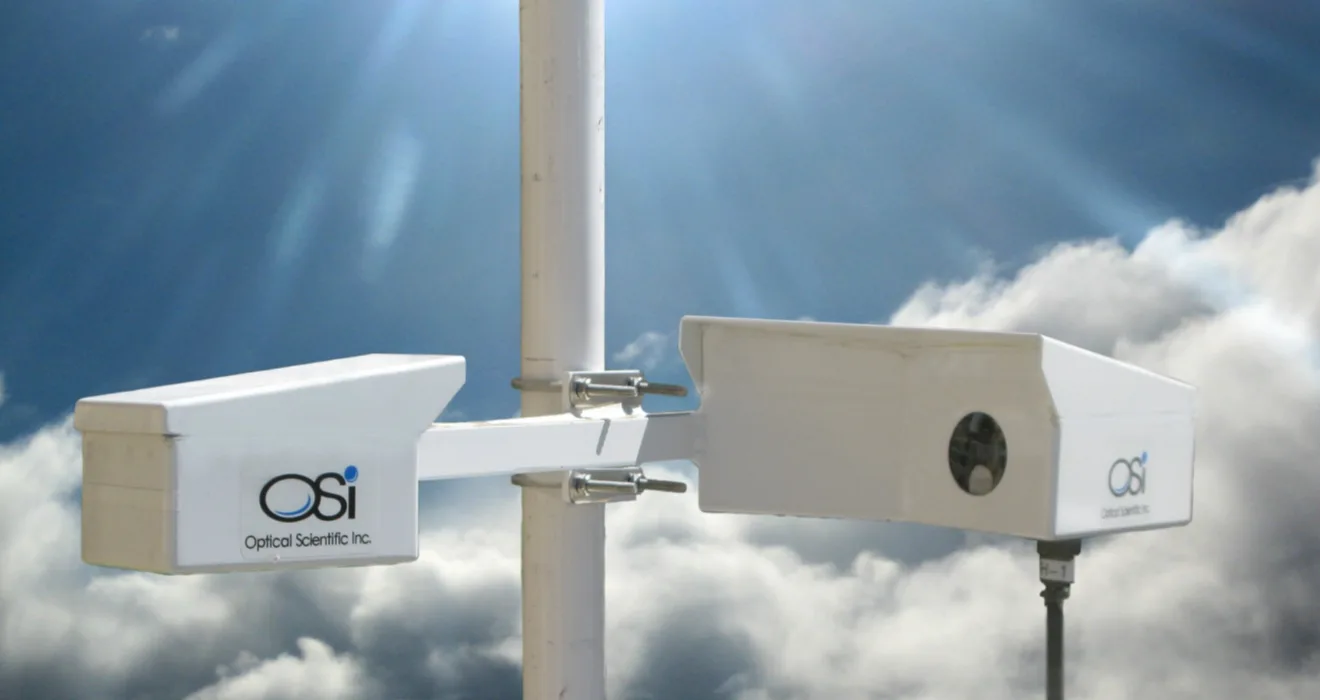Bridging the Gap: Optical Rain Gauges in Hydromet and AgriMet Applications!

Accurate precipitation measurement is fundamental to meteorology and agriculture. Traditional mechanical rain gauges, such as tipping buckets and siphon types, have been widely used for decades. However, these instruments often face challenges in precision, maintenance, and adaptability to diverse environmental conditions. Optical rain gauges (ORGs) have emerged as a sophisticated alternative, offering enhanced accuracy, reliability, and minimal maintenance. This article explores the role of optical rain gauges in hydrometeorological (hydromet) and agricultural meteorological (agrimet) applications, highlighting their advantages, operational principles, and impact on these fields.
Understanding Optical Rain Gauges
Optical rain gauges utilize light scattering or extinction principles to detect and measure precipitation. When raindrops pass through a laser or light beam, they scatter or absorb light, causing detectable changes in the light signal. By analyzing these variations, the gauge can determine the size, velocity, and frequency of raindrops, thereby calculating the precipitation rate and accumulation. This non-contact measurement method offers several benefits over traditional mechanical gauges.
Advantages of Optical Rain Gauges
- High Sensitivity and Accuracy: ORGs can detect very light rainfall, with some models measuring rates as low as 0.1 mm/hr. They also handle extremely high rain rates, exceeding 500 mm/hr, without overflow or mechanical limitations.
- No Moving Parts: The absence of moving components reduces wear and tear, leading to lower maintenance requirements and increased durability.
- Minimal Maintenance: ORGs are less susceptible to clogging from debris and do not require antifreeze chemicals for snow measurement, making them suitable for harsh environments.
- Adaptability to Harsh Conditions: These gauges operate effectively under extreme weather conditions, including high winds and temperatures, ensuring reliable data collection in diverse climates.
- Data Versatility: ORGs provide detailed data, including instantaneous precipitation rates and accumulated totals, which are essential for accurate hydrometeorological and agrimet analyses.
Optical Rain Gauges in Hydrometeorological Applications
In hydrometeorology, precise precipitation data is crucial for flood forecasting, water resource management, and climate studies. ORGs contribute significantly to these areas:
- Flood Forecasting: Accurate real-time rainfall measurements enable timely flood warnings, allowing for effective disaster management and mitigation strategies.
- Water Resource Management: Reliable precipitation data supports the assessment of water availability, aiding in the sustainable management of reservoirs, rivers, and groundwater resources.
- Climate Research: Long-term precipitation records from ORGs assist in studying climate patterns and variability, contributing to a better understanding of climate change impacts.
Optical Rain Gauges in Agricultural Meteorological Applications
Agriculture relies heavily on weather data for crop management, irrigation scheduling, and pest control. ORGs enhance agrimet applications by:
- Irrigation Management: Accurate rainfall data helps in determining irrigation needs, optimizing water usage, and promoting sustainable agricultural practices.
- Pest and Disease Forecasting: Certain pests and diseases are influenced by specific rainfall patterns. ORGs provide the necessary data to predict and manage these threats effectively.
- Crop Yield Estimation: Understanding precipitation patterns aids in forecasting crop yields, assisting farmers and stakeholders in making informed decisions.
Case Study and Application
- Optical Scientific, Inc. (OSI): OSI’s APG-815-DS All Precipitation Gauge employs optical scintillation technology to measure both rain and snow, offering high accuracy and low maintenance. It reports present weather codes in formats compatible with the National Weather Service (NWS) and the World Meteorological Organization (WMO), making it suitable for diverse applications.
Challenges and Considerations
While optical rain gauges offer numerous advantages, several challenges must be addressed:
- Cost: The initial investment for ORGs can be higher than traditional gauges, which may be a consideration for budget-constrained projects. However, their long-term durability and minimal maintenance costs can offset the higher upfront price.
- Installation Requirements: Proper installation is crucial to ensure accurate measurements. Obstructions or incorrect positioning can affect performance. Additionally, environmental factors such as dust, dirt, or insects can potentially interfere with the light sensors, requiring regular cleaning and calibration.
- Data Interpretation: Advanced data processing is required to interpret the detailed information provided by ORGs, necessitating specialized knowledge and training. This can be a barrier for organizations without dedicated meteorological expertise. Furthermore, while the data is more granular, interpreting subtle variations in precipitation patterns may require robust software and advanced analytical techniques to ensure the data is accurate and actionable.
Future Outlook
The integration of optical rain gauges into hydromet and agrimet applications represents a significant advancement in environmental monitoring. Ongoing research and technological developments are expected to enhance their capabilities, making them more accessible and cost-effective. As the demand for precise weather data grows, optical rain gauges are poised to play a pivotal role in addressing global challenges related to water resources, agriculture, and climate change. Innovations such as miniaturization and improved data integration with other meteorological sensors are likely to increase their functionality and ease of use.
Additionally, advancements in machine learning and data analytics will enable more accurate predictions and forecasting, driving better decision-making in resource management. As these technologies evolve, optical rain gauges will become more integral in both large-scale environmental monitoring systems and localized agricultural applications, further bridging the gap in precision and real-time data collection.
Conclusion
Optical rain gauges have revolutionized precipitation measurement by offering high accuracy, reliability, and minimal maintenance. Their application in hydrometeorological and agricultural meteorological fields has led to improved flood forecasting, water resource management, and agricultural practices. Despite certain challenges, the benefits of ORGs make them a valuable tool in modern environmental monitoring, bridging the gap between traditional methods and the need for precise, real-time data. As technology continues to evolve, the use of ORGs will likely expand, providing more actionable insights for addressing global environmental and agricultural challenges. Their ability to deliver timely, detailed rainfall data will be increasingly crucial in mitigating the impacts of climate change and ensuring the sustainability of water resources and agricultural production worldwide.
Upgrade rainfall measurement with Optical Rain Gauges — designed for precision in hydromet and agrimet applications. Whether you’re monitoring weather patterns or optimizing agricultural planning, our advanced technology ensures reliable, real-time data in any environment. Explore how our optical rain gauges can enhance your operations. Contact us to find the perfect solution for your needs!


